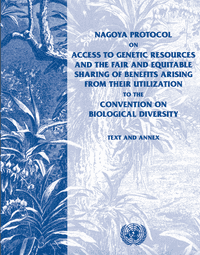
Languages: English, Arabic, Chinese... (6)
Nagoya Protocol on Access and Benefit-sharing
[Nagoya Protocol]
The Nagoya Protocol is a supplementary agreement to the Convention on Biological Diversity. It is a legal framework for fair and equitable benefits arising out of the use of genetic resource and traditional knowledge. The Nagoya Protocol also mandates the creation of a clearing house for easy and transparent exchange of information.
SUMMARY
The Nagoya Protocol on Access to Genetic Resources and the Fair and Equitable Sharing of Benefits Arising from their Utilization (ABS) is a supplementary agreement to the Convention on Biological Diversity (CBD). The Nagoya Protocol is designed to provide a clear legal framework for making sure that benefits that come from the use of local biodiversity are fairly shared with the country of origin, which is one of the three objectives of the CBD. The Nagoya Protocols also require countries to implement national legislation that ensures that the Protocols will be followed during the contracting process for an exchange of genetic materials. In addition, the Protocol covers traditional knowledge about the genetic resources held by indigenous and local communities, and mandates that those communities be appropriately compensated in the knowledge transfer. The Nagoya Protocol entered into force in October 2014.
The Convention on Biological Diversity, which entered into force in December 1993, is an international treaty with 3 main goals: 1. Conservation of Biodiversity, 2. Sustainable use of the components of biological diversity, and 3. The fair and equitable sharing of the benefits arising out of the utilization of genetic resources. The Convention is governed by the Conference of Parties that meets once every two years to discuss relevant conservation issues. The Convention has two protocols, the Cartagena Protocol and the Nagoya Protocol.

..png)
